Filipino food brings together flavors from many cultures. It mixes tastes from Spain, China, America, and local traditions.
The result is a unique cuisine full of bold and exciting dishes.
You’ll discover 30 exotic Filipino recipes that show off the best of this food. From hearty stews to crispy appetizers to sweet desserts, these recipes cover all kinds of meals.
You’ll learn how to make classic Filipino dishes at home using easy-to-follow instructions.
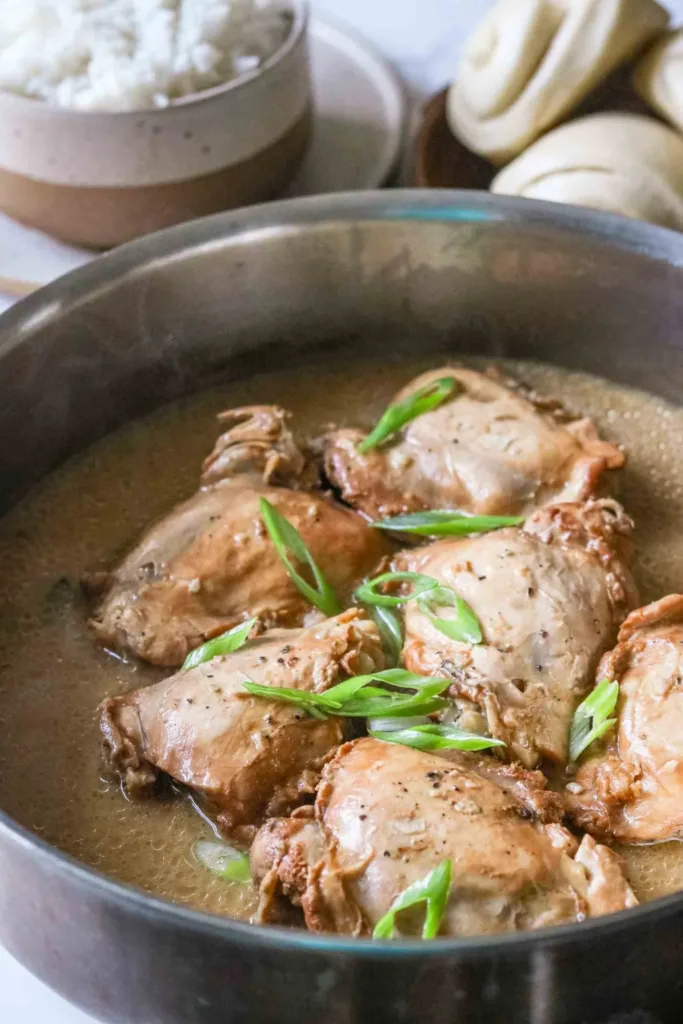
1. Adobo sa Gata
Adobo sa Gata is a tasty twist on the classic Filipino adobo. It combines juicy pork or chicken with creamy coconut milk.
To make this dish, you’ll simmer meat in a mix of vinegar, soy sauce, garlic, and bay leaves.
After the meat is tender, you’ll add coconut milk for richness.
The result is a savory-sweet stew with a velvety texture. The coconut milk balances the tangy flavors of traditional adobo.
Serve Adobo sa Gata over steamed rice for a filling meal. It’s perfect for those who want to try something new with familiar flavors.

2. Kare-Kare
Kare-Kare is a hearty Filipino stew known for its rich peanut sauce. You’ll find tender oxtail, tripe, and vegetables like eggplant and string beans in this dish.
To make Kare-Kare, you first cook the meat until it’s soft. Then you prepare the sauce using ground peanuts, rice flour, and annatto for color.
The vegetables are added near the end to keep them crisp. Serve your Kare-Kare hot with a side of shrimp paste for extra flavor.
This comforting meal is perfect for family gatherings or special occasions.
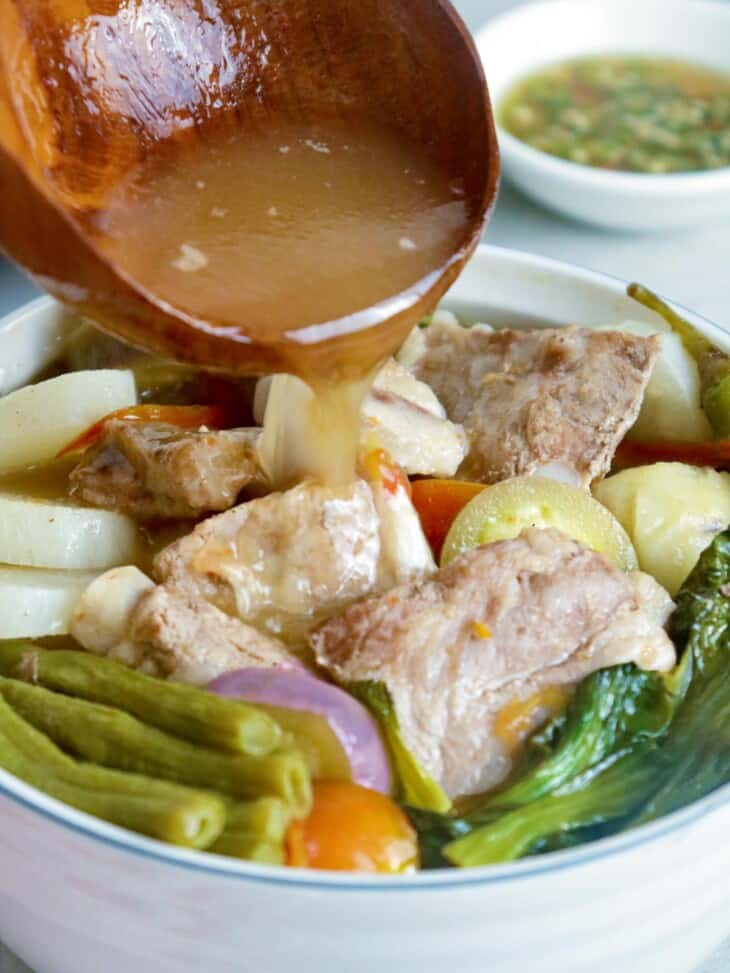
3. Sinigang na Baboy
Sinigang na Baboy is a popular Filipino sour soup made with pork. This comforting dish features tender pork ribs or belly in a tangy tamarind-based broth.
To make it, you’ll need pork, vegetables like tomatoes and onions, and tamarind for the signature sour flavor.
Start by searing the pork to add depth to the broth.
Next, simmer the meat with tomatoes, onions, and fish sauce until tender. Add the tamarind broth and let it boil.
The soup is typically served hot with rice on the side.
This hearty dish is perfect for rainy days or when you’re craving something warm and satisfying. You can adjust the sourness to your liking by adding more or less tamarind.

4. Laing
Laing is a tasty Filipino dish from the Bicol region. It combines dried taro leaves with coconut milk for a creamy, spicy flavor.
To make laing, you’ll simmer taro leaves in coconut milk with pork, shrimp paste, and chili peppers. The leaves absorb the rich coconut flavor as they cook.
You can adjust the spice level by adding more or fewer chilies. Some recipes include ginger and garlic for extra depth.
Laing takes time to cook properly, usually simmering for 30-40 minutes. This allows the flavors to blend and the leaves to become tender.
Serve laing over steamed rice for a satisfying meal. Its unique taste makes it a standout among Filipino dishes.
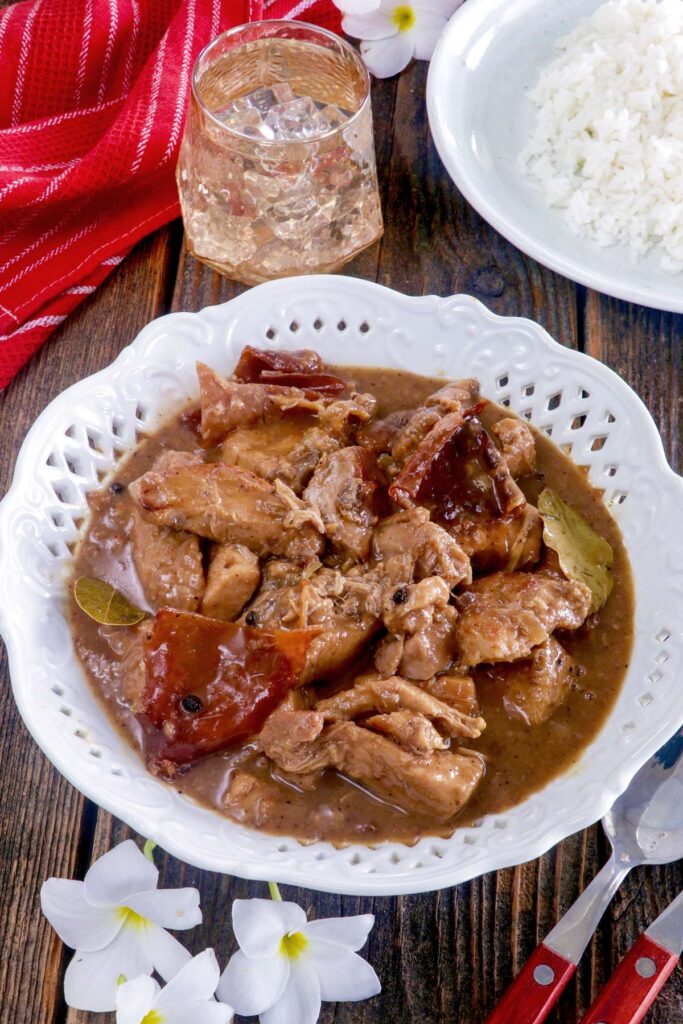
5. Paksiw na Lechon
Paksiw na Lechon is a tasty Filipino dish that gives new life to leftover roast pork. You’ll love this savory and tangy stew made with vinegar, garlic, and lechon sauce.
To make it, simply simmer chopped lechon in a mixture of vinegar, soy sauce, garlic, and peppercorns. Add some lechon sauce for extra flavor and richness.
The result is tender pork in a flavorful sauce.
This dish is quick and easy to prepare, taking only about 30 minutes. It’s perfect for using up leftover roast pork from special occasions.
Serve Paksiw na Lechon hot over steamed rice for a satisfying meal.
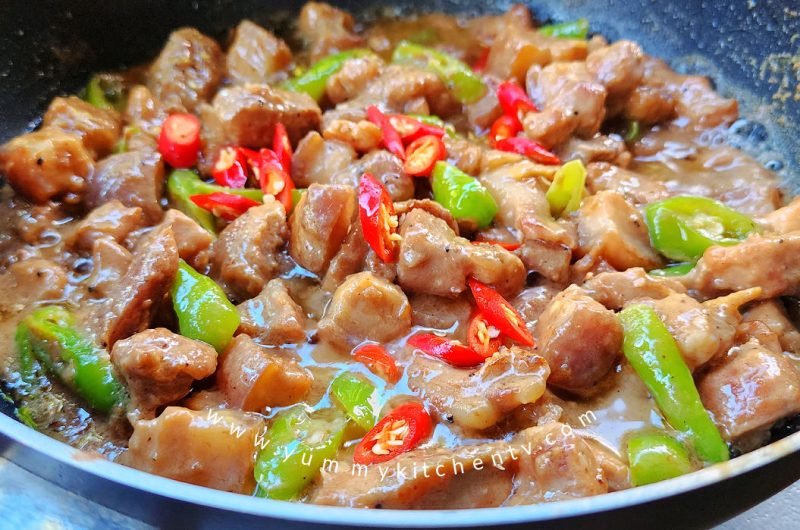
6. Bicol Express
Bicol Express is a spicy Filipino dish that packs a punch. It combines pork, coconut milk, and chili peppers for a rich and fiery flavor.
You’ll love the creamy texture and bold taste of this stew. The recipe originates from the Bicol region, known for its spicy cuisine.
To make Bicol Express, sauté garlic, onions, and tomatoes. Add pork and cook until browned.
Pour in coconut milk and simmer. Stir in chili peppers for heat.
This dish goes well with steamed rice. It’s perfect for those who enjoy spicy food and want to try something new from Filipino cuisine.

7. Pinakbet
Pinakbet is a tasty Filipino veggie stew. It comes from the northern Ilocos region. The dish mixes bitter melon, eggplant, okra, and string beans.
You cook the veggies with pork and shrimp paste. This gives pinakbet a rich, savory flavor. Some recipes add squash or sweet potato too.
To make pinakbet, start by cooking pork until brown. Next, add garlic, onions, and tomatoes. Then toss in the veggies and shrimp paste. Let it all simmer until the veggies are tender.
Pinakbet goes great with steamed rice. It’s a healthy, filling meal packed with nutrition.
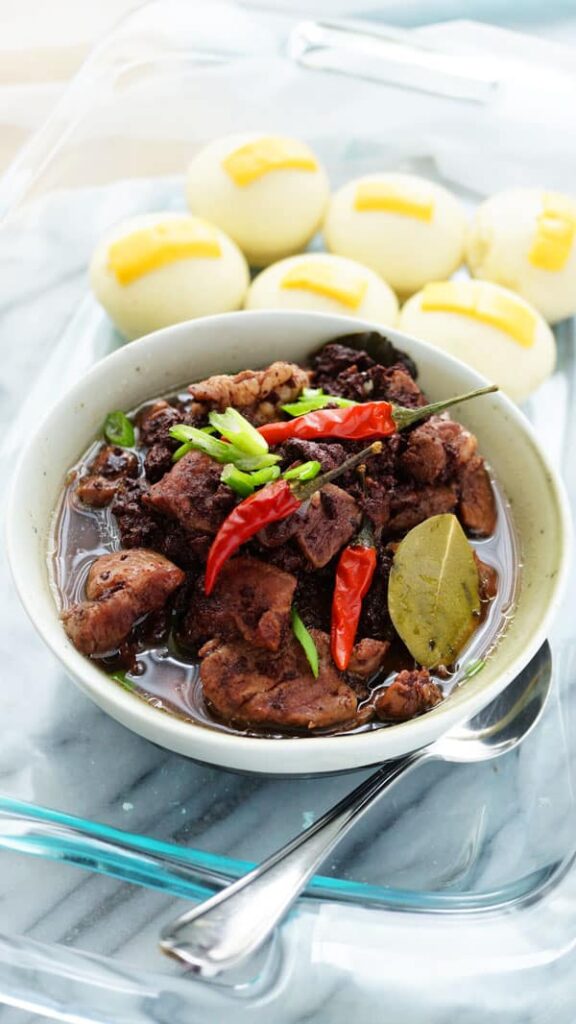
8. Dinuguan
Dinuguan is a rich Filipino stew made with pork and pork blood. This savory dish gets its name from the word “dugo,” meaning blood in Filipino.
To make dinuguan, you’ll need pork meat (often belly or offal), vinegar, garlic, onions, and of course, pig’s blood.
The pork is cooked until tender, then simmered with the blood and seasonings.
The result is a thick, dark stew with a complex flavor. Dinuguan is often served with rice cakes called puto or steamed rice.
It’s a hearty meal that’s popular at Filipino gatherings and celebrations.
Try dinuguan for a unique taste of Filipino cuisine. Its bold flavors and interesting ingredients make it a memorable dish.

9. Crispy Pata
Crispy Pata is a beloved Filipino dish featuring a crispy pork leg. To make it, you boil a pork leg with spices until tender. Then you dry it and deep-fry it until the skin turns golden and crunchy.
The key to perfect Crispy Pata is achieving a balance. You want the outside super crispy, but the inside should stay juicy and flavorful. Proper seasoning and cooking time are crucial.
You can serve Crispy Pata as a main dish or appetizer. It often comes with a soy-vinegar dipping sauce.
This dish is popular at Filipino celebrations and restaurants.

10. Kinchay (Cilantro) Pancit
Kinchay Pancit brings a fresh twist to traditional Filipino noodle dishes. This recipe uses kinchay, also known as Chinese celery or cilantro, as a key ingredient.
To make Kinchay Pancit, start by stir-frying garlic, onions, and tomatoes in a wok. Add your choice of protein, like pork or tofu, and cook until done.
Next, toss in rice noodles and a mix of vegetables such as carrots and green beans. Pour in a savory sauce made from soy sauce, oyster sauce, and fish sauce.
Finally, add a generous amount of chopped kinchay. The herb’s distinct flavor will infuse the dish, giving it a unique taste.
Serve hot and enjoy this aromatic Filipino favorite.

11. Chicken Inasal
Chicken Inasal is a popular Filipino grilled chicken dish from Bacolod City. You marinate chicken pieces in a flavorful blend of vinegar, calamansi juice, garlic, ginger, and lemongrass.
After marinating for 2-4 hours, you grill the chicken while basting it with annatto oil. This gives the dish its signature golden-orange color.
The result is juicy, tangy chicken with a subtle smoky flavor. You can serve Chicken Inasal with rice and a side of chicken oil sauce for dipping.
To make it at home, you’ll need chicken legs or thighs, marinade ingredients, and annatto oil for basting.
Grill the chicken until cooked through, turning and basting regularly.
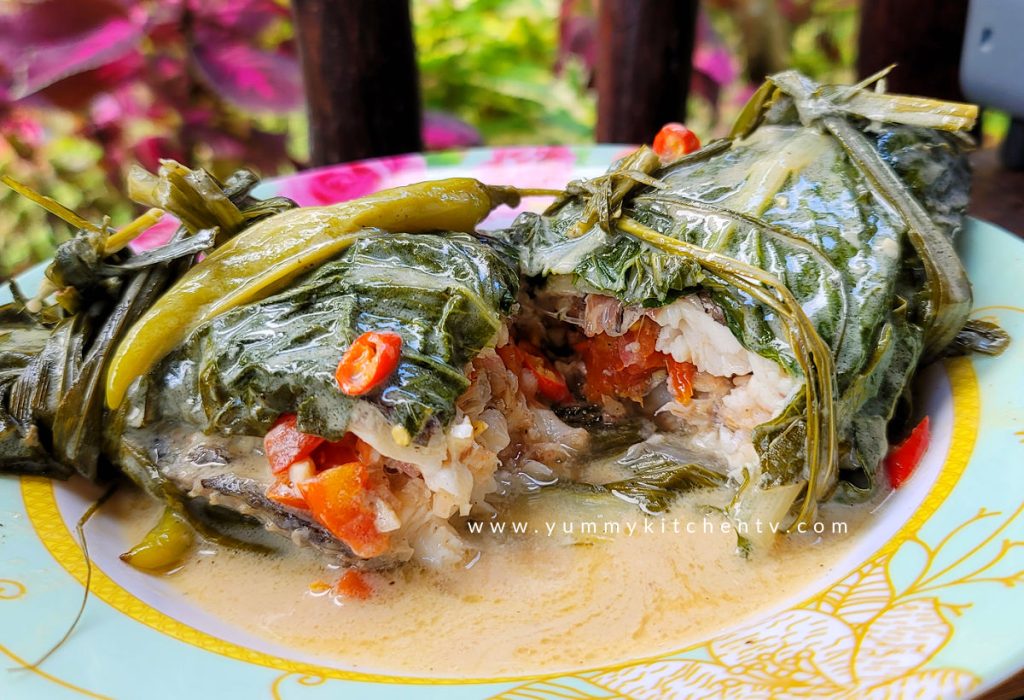
12. Sinanglay na Tilapia
Sinanglay na Tilapia is a tasty Filipino dish that will make your taste buds dance. You wrap tilapia in pechay or bok choy leaves, stuff it with a flavorful mix, and cook it in coconut milk.
To make this dish, you’ll need fresh tilapia, vegetables, and aromatic spices.
Stuff the fish with a blend of tomatoes, onions, ginger, and garlic. Then wrap it in leafy greens.
Cook the wrapped fish in coconut milk with some broth. Add a finger chili for extra kick.
The result is a moist, flavorful fish dish that pairs perfectly with steamed rice.
This recipe is a great way to enjoy tilapia with a Filipino twist. It’s both healthy and delicious, making it a perfect addition to your meal rotation.

13. Pochero
Pochero is a hearty Filipino stew that combines meat, vegetables, and legumes. You’ll find pork as the main protein in many versions of this dish.
To make pochero, start by simmering pork until tender. Then add potatoes, plantains, and chickpeas to the pot.
Next, toss in some cabbage and green beans. For extra flavor, include chorizo de bilbao. Some recipes also call for tomato sauce and fish sauce.
Cook everything together until the vegetables are soft.
Serve your pochero hot with rice for a filling meal that’s perfect for cool days.
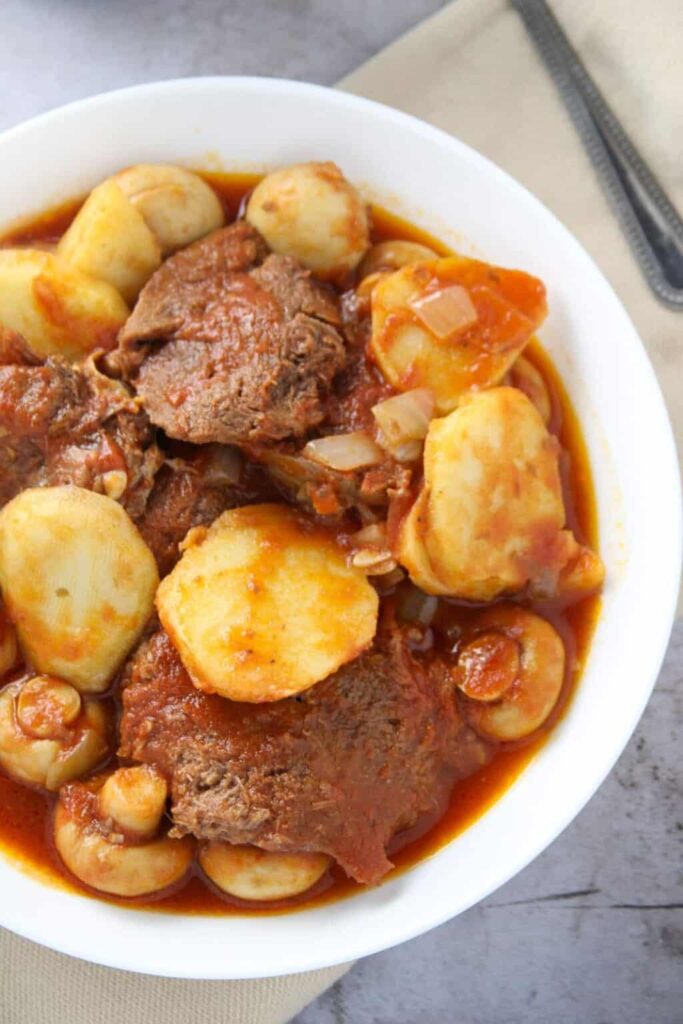
14. Lengua Estofado
Lengua Estofado is a Filipino dish that features tender ox tongue in a flavorful sauce. This unique stew combines Spanish and Filipino cooking methods.
The ox tongue is simmered until very soft. It’s then cooked with tomatoes, soy sauce, vinegar, and sugar. Some recipes add mushrooms for extra flavor and texture.
You’ll find Lengua Estofado at many special occasions and holiday meals in the Philippines.
Its rich taste and melt-in-your-mouth texture make it a crowd favorite.
To make this dish, you’ll need patience as the tongue takes time to become tender. But the result is worth the wait. The sauce is slightly sweet and tangy, perfectly complementing the meat.

15. Camaru (Mole Crickets)
Camaru, or mole crickets, are a unique delicacy from Pampanga, Philippines. These insects offer a crunchy texture and nutty flavor when cooked properly.
To prepare camaru, clean the crickets thoroughly. You can fry them for a crispy appetizer or sauté them with garlic, onions, and tomatoes for a more flavorful dish.
Adobong camaru is a popular recipe. Mix the crickets with vinegar, cooking sake, garlic, salt, and pepper. This creates a tangy and savory meal.
Camaru are rich in protein and calories. They’re often seasonal, so check availability before planning your meal.
Try this exotic dish for a taste of Filipino cuisine.
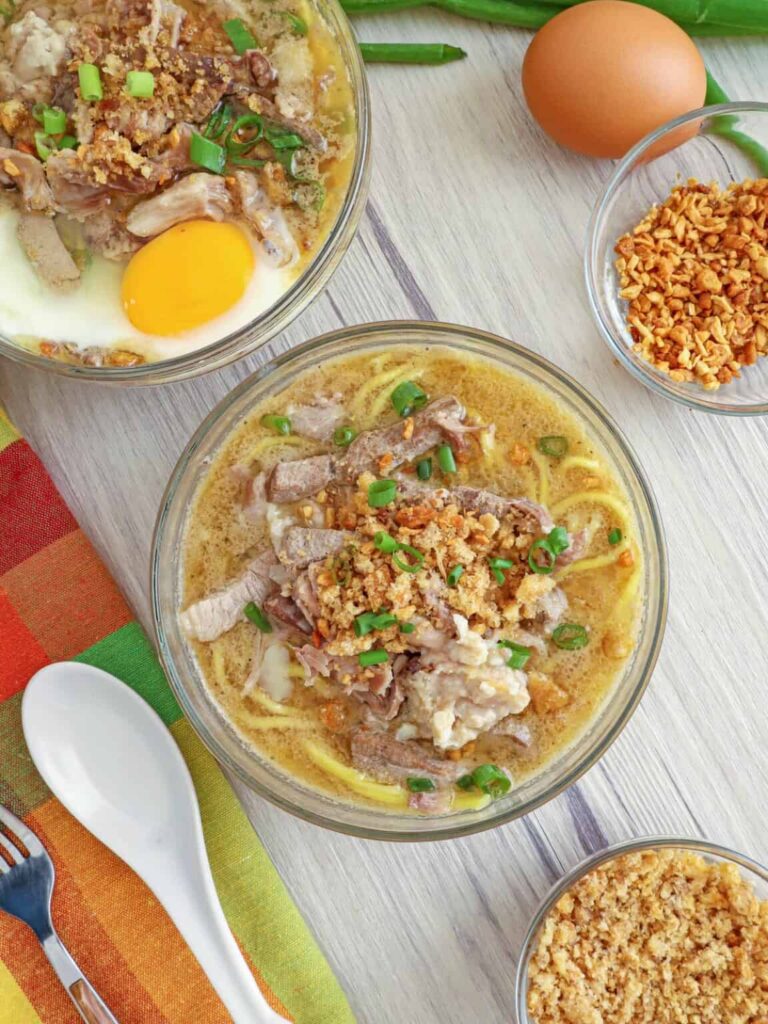
16. Batchoy
Batchoy is a hearty Filipino soup that will warm you up on chilly days. This dish combines tender pork, liver, and sometimes intestines in a flavorful broth.
To make batchoy, start by sautéing garlic, onions, and ginger. Add pork and cook until lightly browned.
Pour in water and simmer until the meat is tender.
Season the soup with fish sauce for a savory kick. Some recipes include misua noodles for extra texture.
You can top your batchoy with crispy garlic bits and green onions for added crunch and freshness.
Enjoy this comforting soup as a main dish or appetizer. It’s perfect for sharing with family and friends on cool evenings.
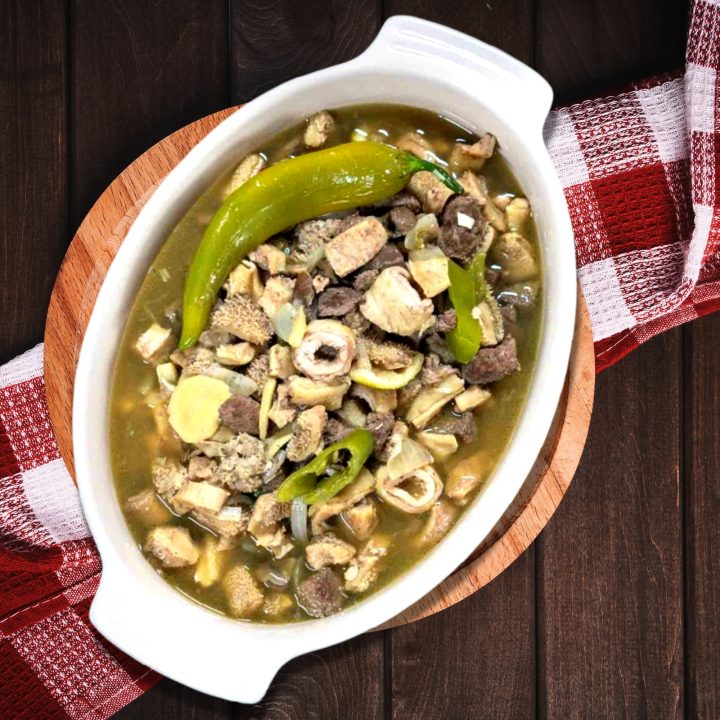
17. Papaitan
Papaitan is a Filipino dish known for its unique bitter taste. It uses beef innards like tripe, heart, and liver.
To make papaitan, you first clean and boil the innards. Then sauté garlic, onion, and ginger in oil. Add the cooked innards and stir-fry.
Pour in water or broth and let it simmer.
The key ingredient is bile, which gives the dish its signature bitter flavor. Some recipes also add Sinigang mix for extra sourness.
Season with salt and pepper. Finish by adding green chili peppers for a spicy kick. Serve hot as a main dish or appetizer with rice.
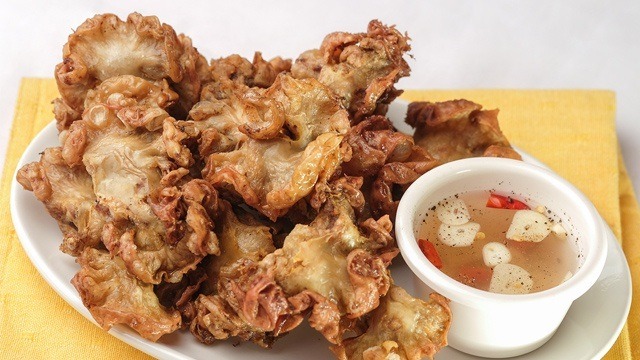
18. Chicharon Bulaklak
Chicharon bulaklak is a crunchy Filipino snack made from deep-fried pork intestines. You’ll love its savory flavor and crispy texture.
To make it, clean the intestines thoroughly and boil them until tender.
Cut them into smaller pieces and deep-fry until golden brown and crispy.
Serve chicharon bulaklak hot with a spicy vinegar dip. It’s a popular appetizer or beer snack in the Philippines.
You can find this dish at street food stalls and local eateries. It’s often enjoyed as “pulutan” – a snack eaten while drinking alcohol.
While tasty, chicharon bulaklak is high in fat and should be eaten in moderation.
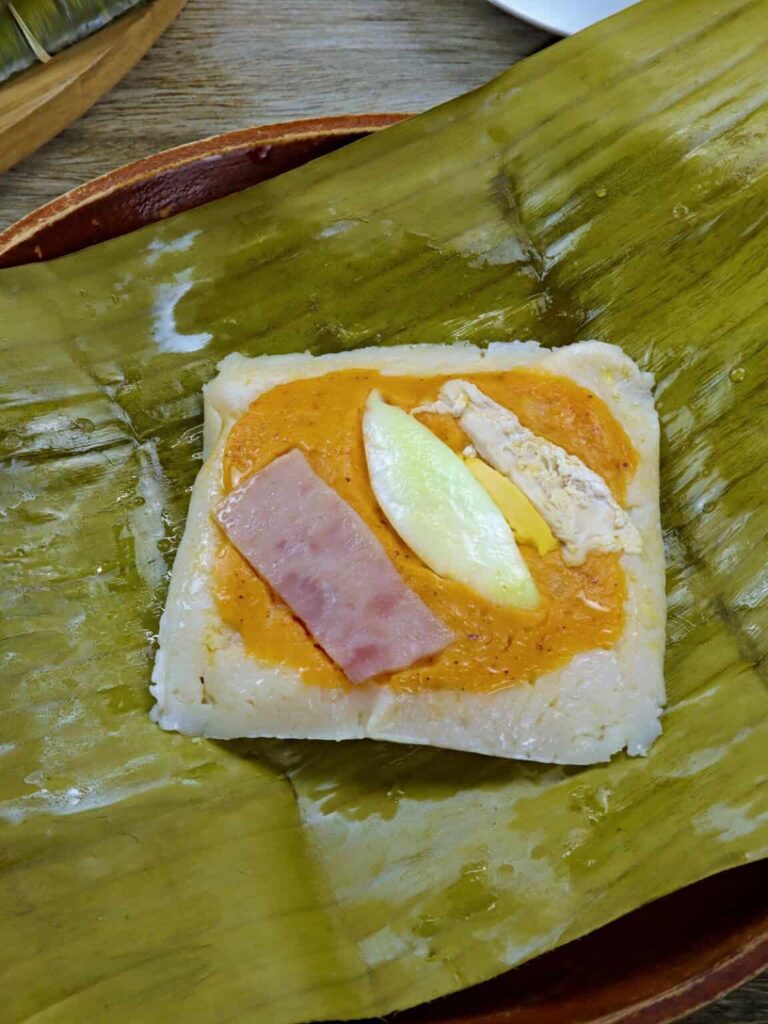
19. Tamales Pampagueña
Tamales Pampagueña is a tasty Filipino dish from Pampanga. You’ll love this unique take on tamales.
The recipe uses rice flour and coconut milk for a creamy base. It’s filled with chicken, pork, or both.
You’ll find chopped peanuts and eggs inside too. The mixture is wrapped in banana leaves before steaming.
The result is a soft, flavorful package. The banana leaves give it a subtle aroma.
Try this dish for a taste of Filipino culture. It’s often enjoyed during special events or holidays.
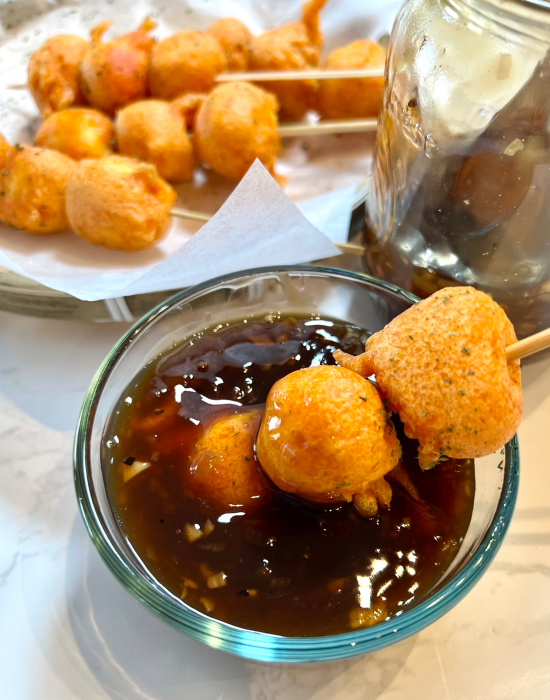
20. Kwek-Kwek
Kwek-kwek is a popular Filipino street food you’ll love.
It’s made with quail eggs coated in a bright orange batter and deep-fried until crispy.
To make kwek-kwek, boil quail eggs for about 4 minutes. Peel them once cooled.
Mix flour, cornstarch, salt, and spices to make the batter. Add water and orange food coloring for that signature hue.
Dip the eggs in the batter and fry them in hot oil until golden and crispy.
Serve kwek-kwek hot with a sweet and spicy dipping sauce. It’s a tasty, protein-packed snack you can enjoy on the go.

21. Inutak
Inutak is a delicious Filipino rice cake that will satisfy your sweet tooth. This dessert comes from Pateros or Taguig and is made with glutinous rice flour, coconut milk, and sugar.
The mixture is cooked until thick, then topped with coconut cream.
It’s baked or broiled until the top turns golden brown, giving it a unique charred flavor.
You might find some versions that include ube jam for extra sweetness and color. Inutak has a soft, sticky texture that makes it a joy to eat.
Try this tasty treat as a snack or dessert. It’s less well-known than other Filipino rice cakes, but it’s just as delicious.
You’ll love its classic flavors and interesting texture.
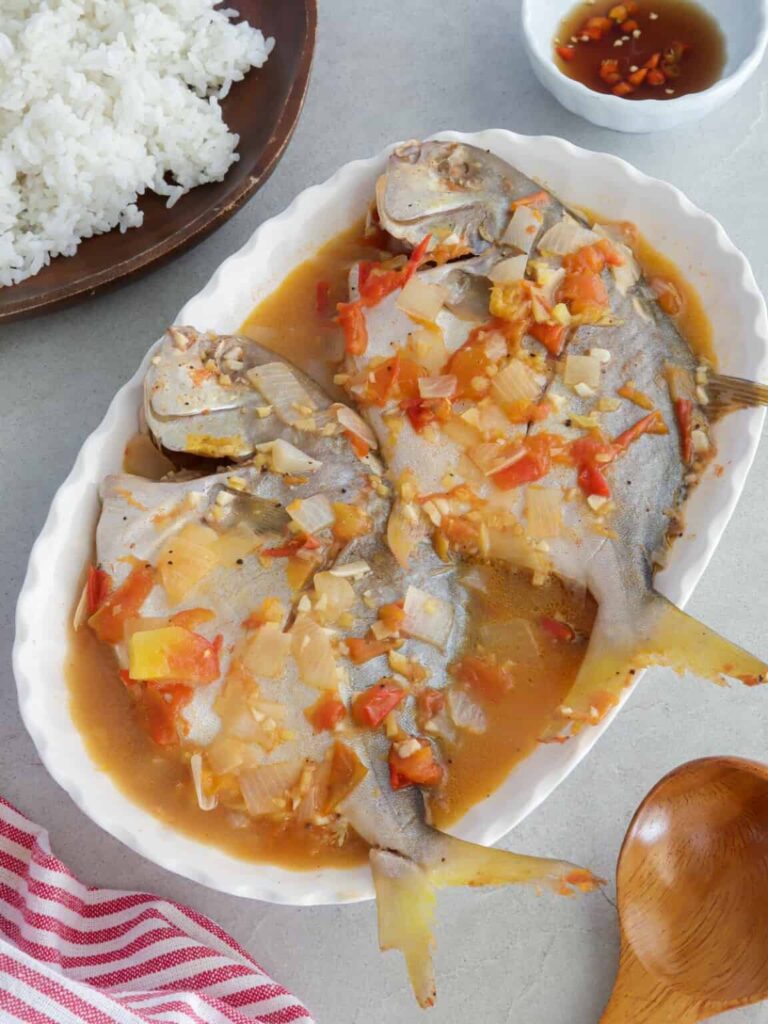
22. Pinangat na Isda
Pinangat na Isda is a tasty Filipino fish dish you’ll want to try. It’s a simple recipe that packs a flavorful punch.
The dish features fish stewed with tomatoes and sour ingredients. You can use different types of fish, like snapper or any local variety.
To make it, you’ll need fish, tomatoes, ginger, and onions. Some recipes add kamias (bilimbi) for extra sourness.
You’ll arrange the fish in a pot with the other ingredients. Then, you’ll let it simmer until the fish is cooked and the flavors blend.
Pinangat na Isda can be served as a main dish with rice. It’s a healthy option that’s both delicious and easy to make.

23. Taba ng Talangka
Taba ng talangka is a prized Filipino ingredient made from crab fat and roe. This flavorful paste adds richness to many dishes.
You can use taba ng talangka to enhance fried rice.
Sauté garlic, ginger, and shallots in oil, then stir in the crab paste. Add cooked rice and mix well.
For a simple shrimp dish, melt butter in a pan and cook shrimp until orange. Add garlic, salt, and pepper, then stir in the taba ng talangka.
Try spreading taba ng talangka on grilled seafood or meats for extra flavor. You can also use it as a condiment or dip.
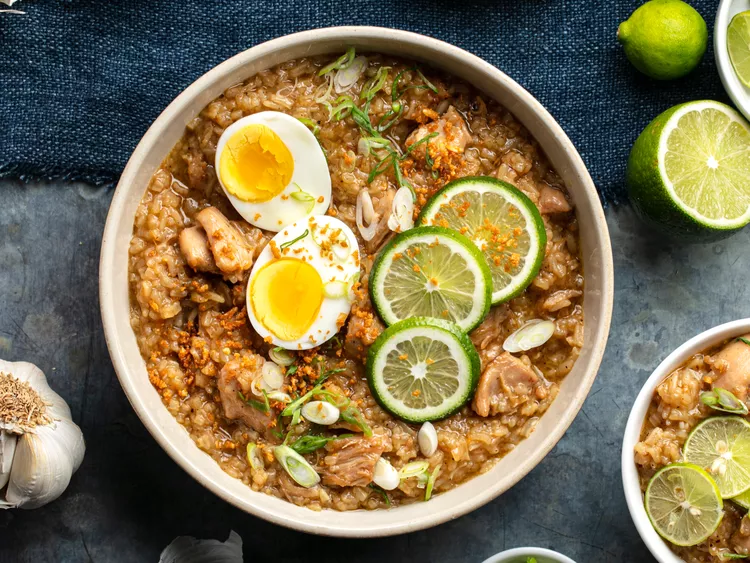
24. Arroz Caldo
Arroz caldo is a comforting Filipino rice porridge. You’ll find it’s similar to Chinese congee but with its own unique twist.
This warm dish combines chicken and rice with flavorful ingredients.
To make arroz caldo, you cook glutinous rice in chicken broth. You add onions, garlic, and fresh ginger for a fragrant base. Fish sauce gives it a savory umami taste.
The dish often comes with toppings like scallions and hard-boiled eggs. Some versions include safflower for a yellow color.
You can enjoy arroz caldo as a snack or a light meal.
It’s perfect for chilly days or when you’re feeling under the weather.
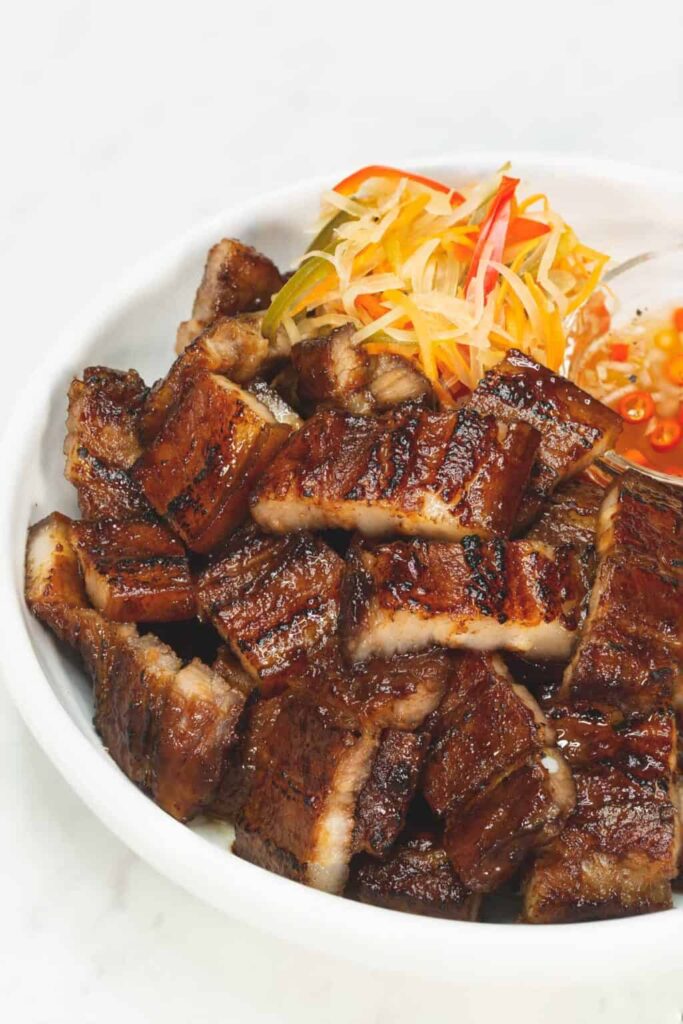
25. Inihaw na Liempo
Inihaw na Liempo is a mouthwatering Filipino grilled pork belly dish. You’ll love the juicy, tender meat with its crispy, charred exterior.
To make it, marinate pork belly slices in a mix of soy sauce, calamansi juice, garlic, and spices. Let the flavors soak in for at least an hour.
Grill the marinated pork over hot coals until cooked through and nicely charred. You can also use an oven or air fryer for a different texture.
Serve your Inihaw na Liempo with a spicy vinegar dipping sauce. It’s perfect as an appetizer or main dish at your next barbecue or gathering.

26. Nilasing na Hipon
Nilasing na Hipon is a tasty Filipino dish of “drunken shrimp.” You marinate shrimp in wine or liquor for 30-40 minutes. This gives the shrimp a unique flavor.
After marinating, coat the shrimp in a mixture of flour, salt, and pepper. Then deep fry them until golden and crispy. The alcohol cooks off, leaving behind a subtle taste.
You can use gin, beer, or wine for the marinade. Some recipes add garlic or chili for extra flavor.
Serve Nilasing na Hipon hot as an appetizer or main dish.
This crispy fried shrimp is popular at parties and gatherings. It’s a fun twist on regular fried shrimp that will impress your guests.

27. Ginataang Kuhol
Ginataang Kuhol is a Filipino dish made with freshwater snails cooked in coconut milk. You start by cleaning the snails thoroughly to remove any slime or dirt.
Next, you sauté garlic, onions, and ginger in a pot. Add the cleaned snails and stir for a few minutes.
Pour in coconut milk and let it simmer until the snails are tender.
For added flavor, you can include shrimp paste and chili peppers. Some recipes also call for turmeric or fish sauce.
The dish is done when the sauce thickens and the snails are fully cooked.
Ginataang Kuhol is often enjoyed as a main course with steamed rice. Its rich, creamy sauce and unique texture make it a favorite in many Filipino households.

28. Iskrambol
Iskrambol is a refreshing Filipino treat perfect for hot days.
You’ll love this icy delight made from shaved ice, milk, and colorful syrups. It’s often topped with marshmallows, sprinkles, and powdered milk for extra sweetness.
To make iskrambol at home, blend ice cubes with condensed milk and banana flavoring. Add a drop of red food coloring for that classic pink hue. Pour the mixture into cups and add your favorite toppings.
This street food favorite is cheap and easy to find in the Philippines. Kids and adults alike enjoy its sweet, creamy taste and fun texture.
Try iskrambol for a unique and tasty way to cool off!
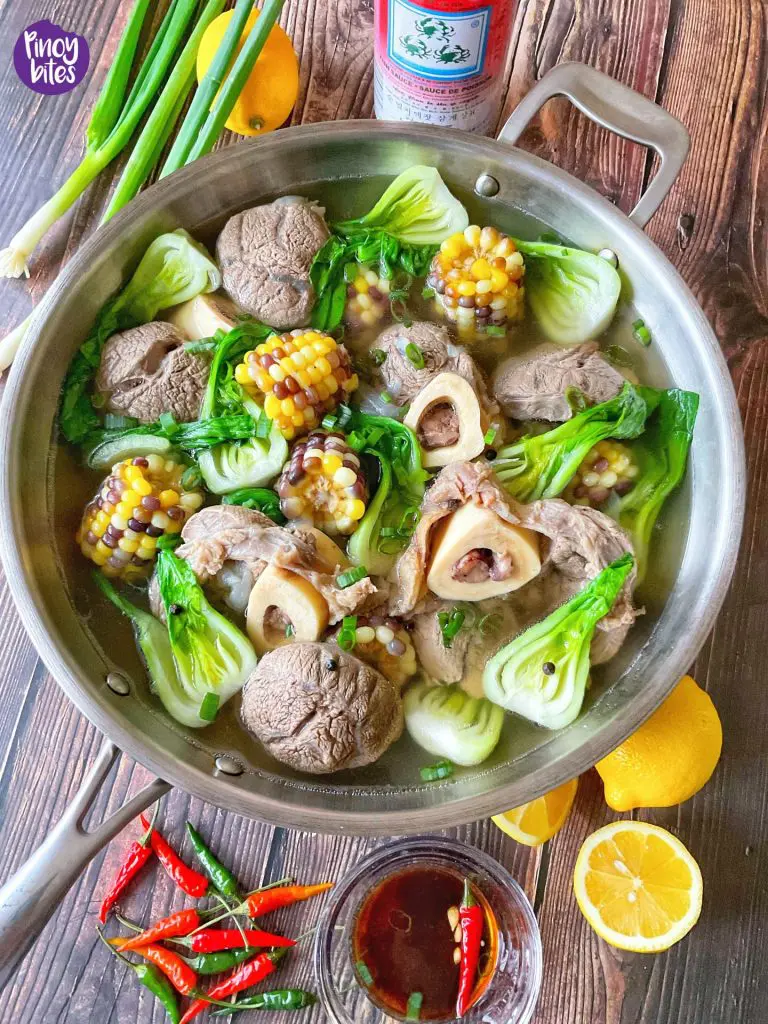
29. Bulalo
Bulalo is a hearty Filipino soup that will warm you up on chilly days. This dish features tender beef shanks and bone marrow simmered in a flavorful broth.
To make bulalo, you’ll need beef shanks, corn, peppercorns, onions, and leafy greens like cabbage or pechay.
Start by boiling the beef shanks until the meat is fork-tender. Add corn cobs and simmer until cooked.
Toss in your choice of vegetables during the last few minutes of cooking. Season with fish sauce and salt to taste.
Serve your bulalo piping hot in large bowls. The rich broth and tender meat make this dish a comforting Filipino favorite.

30. Piaya
Piaya is a sweet Filipino flatbread from the Negros region. You’ll love this delicious treat filled with muscovado sugar.
To make piaya, you mix flour, salt, and shortening to form a dough. Then you divide it into small portions.
Each piece is flattened and filled with muscovado sugar. You seal the edges and roll it out thin.
Sprinkle sesame seeds on both sides before cooking. Grill or bake the flatbreads until they turn golden brown.
Piaya goes perfectly with a cup of coffee or tea. It’s a popular snack and souvenir from Negros.
Understanding Filipino Cuisine
Filipino cuisine blends diverse influences and regional specialties. It features unique flavors and ingredients that reflect the country’s history and geography.
Historical Influences
Spanish colonization shaped Filipino cooking for over 300 years. This brought new ingredients like tomatoes, corn, and potatoes. It also introduced cooking methods like braising and roasting.
Chinese traders added their mark with noodle dishes and cooking techniques. Stir-frying became popular, along with ingredients like soy sauce and bean sprouts.
American rule in the 20th century brought canned goods and fast food. This led to dishes like Filipino-style spaghetti with sweet tomato sauce and hot dogs.
Regional Variations
The Philippines has over 7,000 islands, each with distinct culinary traditions.
Northern regions use more meat and vegetables due to cooler climates. Southern areas feature more seafood and coconut-based dishes.
Ilocano cuisine in the north is known for bitter and sour flavors. Bicolano food in the southeast is famous for spicy dishes with coconut milk.
Visayan cooking in central Philippines uses more seafood and coconut vinegar. Muslim-influenced Mindanao cuisine features spicy flavors and coconut-based curries.
These regional differences make Filipino food diverse and exciting to explore.
Exotic Ingredients in Filipino Recipes
Filipino cuisine uses many unique ingredients that give dishes their special flavors. These range from spices to fruits and vegetables you might not find in other cuisines.
Unique Spices and Flavors
Filipino cooking relies on some key spices and flavors.
Calamansi is a small citrus fruit that adds a tangy taste to many dishes. You’ll often see it used in marinades and dipping sauces.
Patis, or fish sauce, is another common ingredient. It gives food a salty, savory flavor. Bagoong, a fermented shrimp paste, is also used to add depth to recipes.
Annatto seeds bring a reddish color and nutty flavor to many Filipino dishes. You might use them in adobo or kare-kare.
Ube, a purple yam, is popular in desserts. It has a sweet, nutty taste and vibrant color that makes treats eye-catching.
Uncommon Fruits and Vegetables
Some Filipino recipes call for fruits and veggies you may not know.
Bitter melon, or ampalaya, is used in many savory dishes. It has a strong, bitter taste that balances out other flavors.
Banana hearts are the flower buds of banana plants. You can use them in salads or stews for a soft, artichoke-like texture.
Jackfruit is a large tropical fruit. When unripe, it’s used in savory dishes as a meat substitute. Ripe jackfruit is sweet and often eaten as a snack.
Malunggay leaves come from the moringa tree. They’re very nutritious and used in soups and stews.
Lastly, green papaya is used unripe in dishes like tinola soup. It adds a crisp texture and mild flavor to the broth.
Tips for Cooking Filipino Dishes
Filipino cuisine blends flavors and techniques from various cultures. To make tasty Filipino dishes, you’ll need to master a few key skills and understand how to balance tradition with modern adaptations.
Cooking Techniques
Sautéing is a crucial skill for many Filipino recipes.
Start by heating oil in a pan, then add garlic and onions as a flavor base. For adobo dishes, marinate meat in vinegar, soy sauce, and spices before cooking. This adds depth to the flavor.
Stewing is another common method. Simmer ingredients in a flavorful liquid to create dishes like sinigang. Use a low heat and let the flavors meld slowly.
Grilling gives dishes like inihaw na liempo their distinctive taste.
Marinate pork belly in a mix of soy sauce, calamansi juice, and spices before grilling.
For crispy lumpia, make sure your oil is hot enough before frying. Test it with a small piece of wrapper first.
Authenticity vs. Adaptation
You can stay true to traditional Filipino recipes while making small changes to suit your taste.
Use local ingredients as substitutes when you can’t find Filipino staples. For example, lemon juice can replace calamansi in a pinch.
Feel free to adjust spice levels.
Filipino food isn’t typically very spicy, but you can add heat if you prefer. Just be careful not to overpower the dish’s original flavors.
Try fusion ideas to create new Filipino-inspired dishes.
Combine Filipino flavors with cooking styles from other cuisines. This can lead to exciting new recipes while keeping the essence of Filipino food.